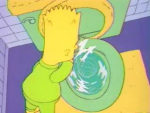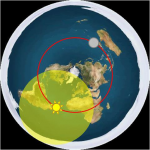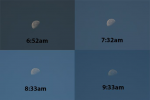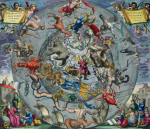The Sun’s light is golden, warm, drying, preservative and antiseptic, while the Moon’s light is silver, cool, damp, putrefying and septic. The Sun’s rays decrease the combustion of a bonfire, while the Moon’s rays increase combustion. Plant and animal substances exposed to sunlight quickly dry, shrink, coagulate, and lose the tendency to decompose and putrify; grapes and other fruits become solid, partially candied and preserved like raisins, dates, and prunes; animal flesh coagulates, loses its volatile gaseous constituents, becomes firm, dry, and slow to decay. When exposed to moonlight, however, plant and animal substances tend to show symptoms of putrefaction and decay. This proves that Sun and Moon light are different, unique, and opposites as they are in the geocentric flat model.
View attachment 246218
View attachment 246218








